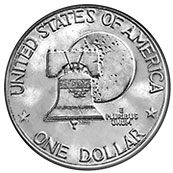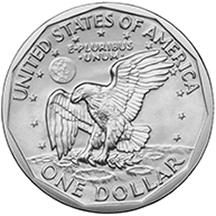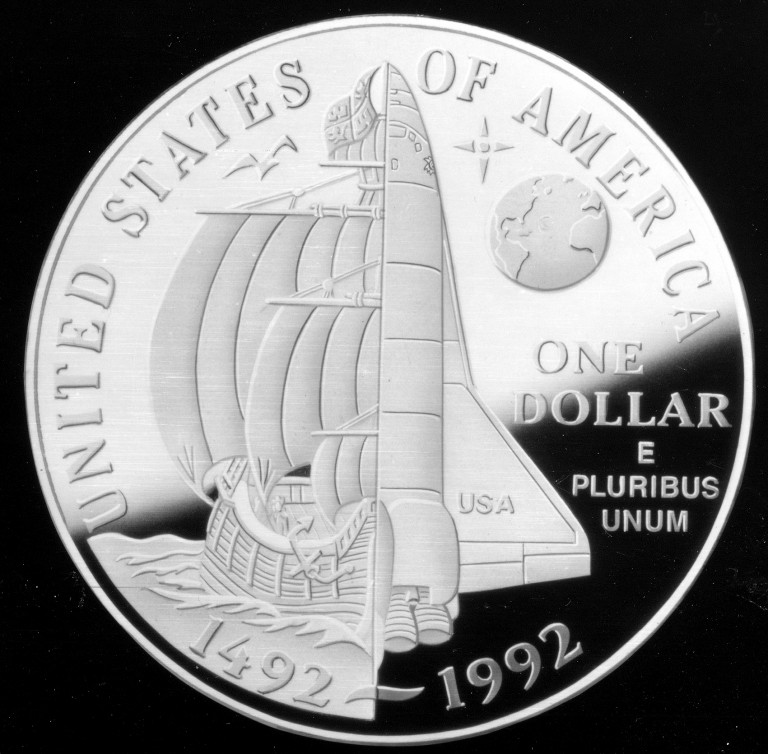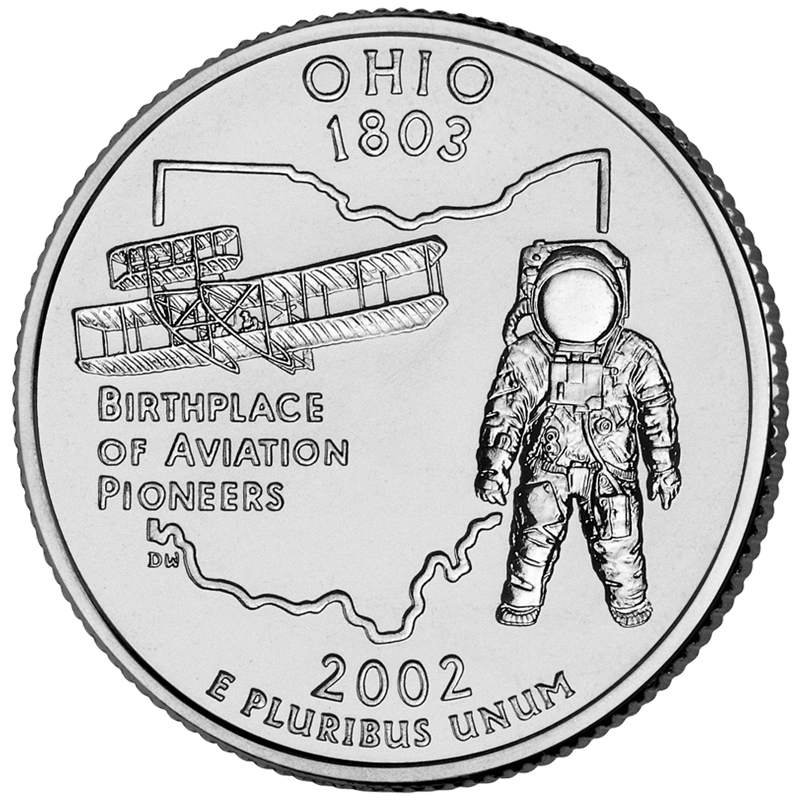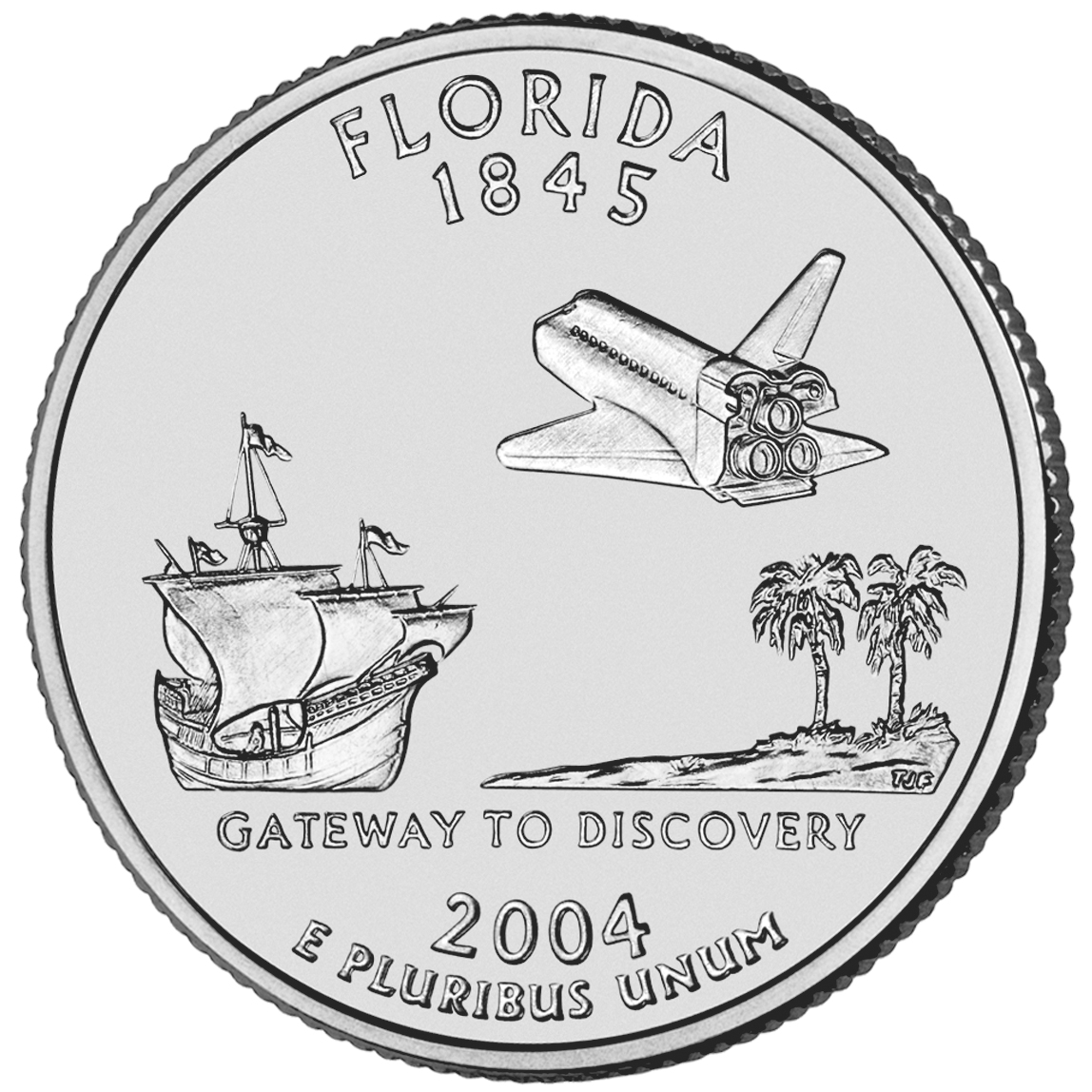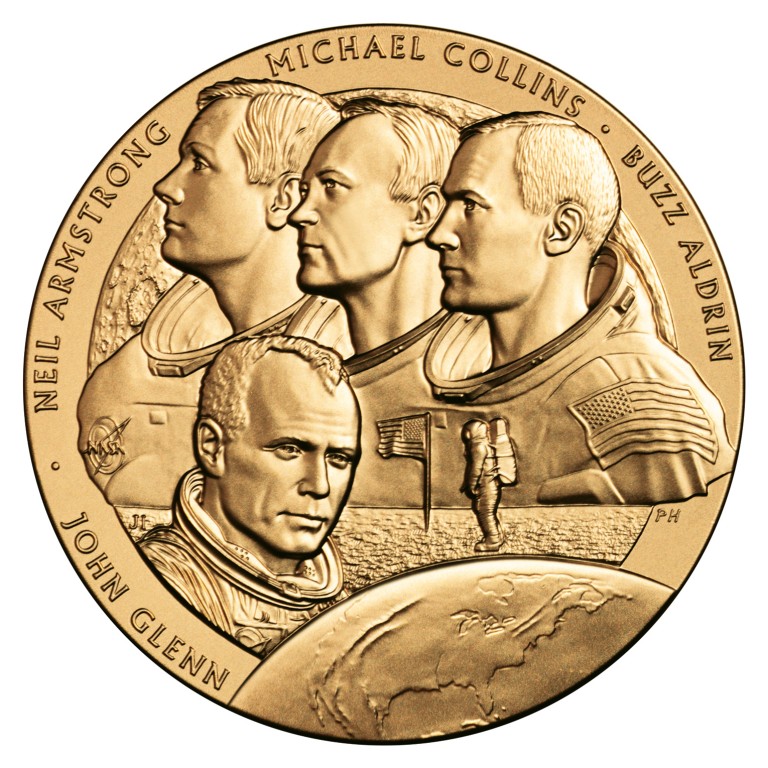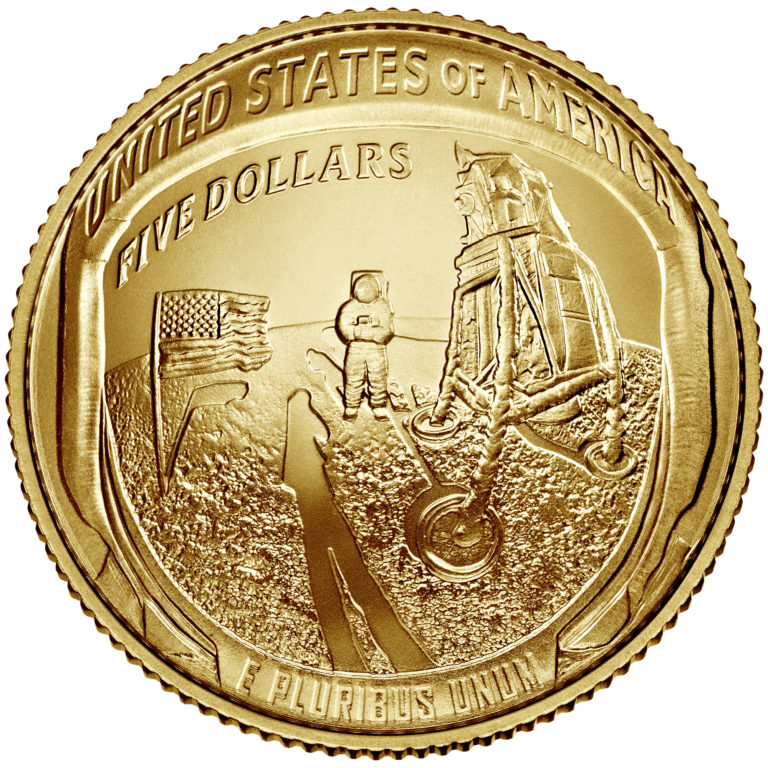By Office of Corporate Communications
July 2, 2019
What’s been to Mars, the International Space Station, the Hubble Space Telescope, and the Kuiper Belt? The answer may surprise you – U.S. coins.
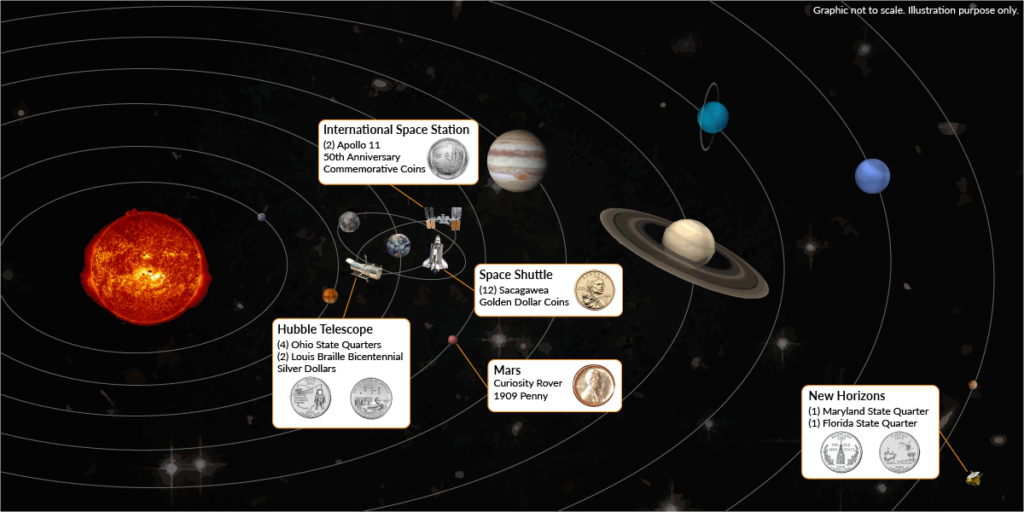
Our coins have journeyed across space and witnessed historic moments in space exploration. The first U.S. coin to officially leave Earth’s atmosphere was the Sacagawea Golden Dollar in 1999. In the 20 years since, other coins have made the trip into space. This year coins made it to the International Space Station (ISS) and the Kuiper Belt.
In May, two Apollo 11 50th Anniversary commemorative coins were on board the ISS. Astronaut Christina Koch sent a message from the space station before the coins returned to Earth in June. One of the coins will go to the Smithsonian National Air and Space Museum while the other will stay with the Mint.
Maryland and Florida state quarters are aboard NASA’s New Horizons spacecraft to honor the states that designed and launched the craft. The two quarters, which began their journey in 2006, serve as spin balance weights. They helped make history in January 2019 when New Horizons flew past Ultima Thule in the Kuiper Belt, the furthest object ever explored.
Space-Themed Coins and Medals
In addition to sending coins to space, the Mint also designs coins and medals to honor the accomplishments of the U.S. space program. This year, two coin programs mark the achievements of the Gemini and Apollo space programs: the 2019 Native American $1 Coin and the Apollo 11 50th Anniversary Commemorative Coin Program.
The 2019 Native American $1 Coin highlights Mary Golda Ross of the Cherokee Nation, who was the first Native American engineer in the U.S. space program. Her research for Lockheed Martin’s top secret think tank, Skunk Works helped to develop the Agena spacecraft for the Gemini and Apollo space programs.
The coin design features Ross writing calculations, with an Atlas-Agena rocket launching into space in the background with an equation inscribed in its cloud. The equation represents the energy it takes to leave Earth and reach the orbit of a distant planet. The coin also features John Herrington of Chickasaw Nation, who in 2002, was the first Native American to walk in space.
The Mint also launched a commemorative coin program to celebrate the 50th anniversary of the Moon landing. The Apollo 11 50th Anniversary Commemorative Coin Program includes four coins of gold, silver, clad, and five ounce silver that share the same design. The obverse shows a footprint on the Moon’s surface and honors the contributions of the Mercury, Gemini, and Apollo programs. The reverse is astronaut Buzz Aldrin’s helmet with a reflection of Neil Armstrong, the lunar lander, and the American flag.
In 1971, the Mint honored the Moon landing by making the country’s first space-themed coin. The 1971 Eisenhower dollar reverse featured an eagle on the moon, a copy of Apollo 11’s insignia. Learn more about coins and medals with space related designs in the gallery below.
See more Inside the Mint articles.



